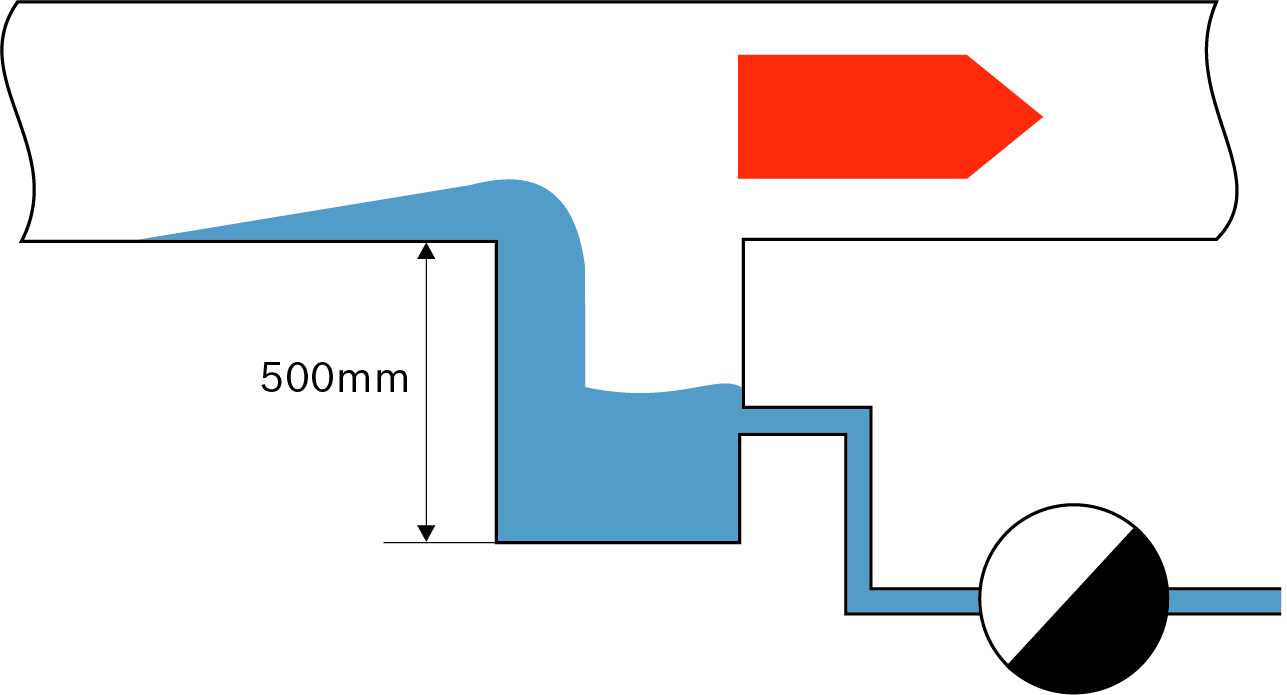Steam pipes

|
Steam or condensate hammer If steam pipes or items of equipment such as heat exchangers are not drained sufficiently, significant damage could occur as a result of steam hammer. If hot steam or hot condensate comes into contact with cold water, this is accompanied by the sudden breakdown of large steam bubbles. This implosion causes an inrush of water which collides with itself and causes high-pressure peaks. Steam hammer is primarily caused by insufficient condensate drainage, inappropriate installation or defective devices and incorrect operation. |
Drainage
Due to heat loss in the pipework, condensate accumulates in saturated steam pipes which must be collected and removed. There should therefore be a gentle gradient of 5 – 10mm per m pipe length, i.e. 0.5 – 1%, in the flow direction to allow the condensate to flow to the drainage connections.
The drainage connections are then installed as follows:
- In straight pipework regularly every 30 – 50m
- Before every stagnation point (e.g. valves or vertical pipework sections)

These must be able to reliably remove and collect condensate in the pipework so that it can be effectively carried away by condensate drains. With nominal diameters up to DN 100, the drainage connections should be constructed with the same nominal diameter as the steam pipe to allow the condensate that forms when starting up also to be collected. With bigger nominal diameters, the nominal diameters of the collection connections can then be smaller than the nominal diameter of the steam pipe. The collection connections should be 500mm long and the condensate pipes attached laterally to prevent dirt from impairing the functionality of the condensate drain. As a rule, the condensate should not be discharged into the atmosphere due to the significant enthalpy, and instead should be transported via a collecting line to the feed water vessel where it can be reused.
The quantity of condensate to be removed is linked via the evaporation enthalpy to the heat loss in the pipework, valves and other built-in components for the corresponding pipework section. The quantity of condensate can be estimated using the equations in the chapter Planning – Heat losses in steam pipes.